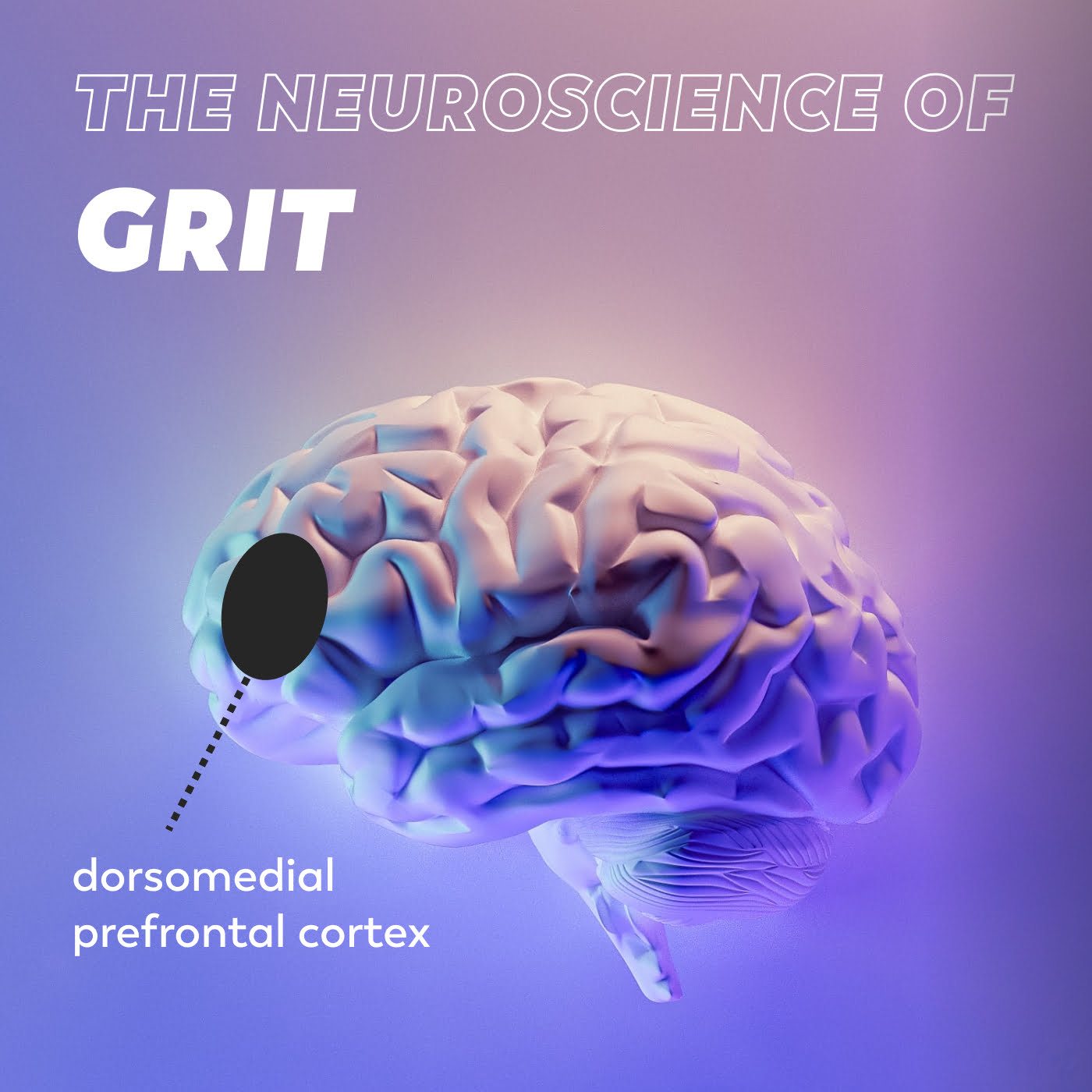Burning without burning out: A psychology geek’s take on passion and why it matters for flow states
Flow Lab is your AI-powered mental fitness app that helps you experience the highly productive Flow State more often. So get your 7-day free trial and train your mind with science-backed guided and personalized meditations:
![]()
![]()
About the author
This article was written by Flow Lab's Head of Content and MSc. psychologist Eva Siem. She studied at the University of Groningen (NL) and is specialized in the area of performance and motivational psychology. In her articles, she combines findings from psychological research with practical tips from her experience as mental fitness coach and workshop trainer.
In order to introduce today’s topic – the psychology behind passion and flow – let’s start this article off with a little Greek history (yeah that’s right, stick with me): Maybe you have heard of the mathematician Archimedes. He was deeply passionate for mathematics and couldn’t stop working on his maths problems. Not even during the siege of Syracuse in 212 BC. While everything was turned upside down around him, he was so focused on a geometric proof that he continued working. When Roman soldiers eventually caught him, he said: “I beg you, don’t disturb [my circles]” (Bailey, 2000).
Is passion a risk factor for burnout?
The word “passion” stems from the Latin “pati” – to suffer. And with our achievement-oriented society in the back of our heads, we’ve understood by now that passion is a double-edged sword: Following their passions is deemed indispensable for many. They motivate us, bring us joy and meaning. Studies actually show that highly passionate entrepreneurs are more likely to succeed in getting investors on board to finance their ventures (Cardon et al., 2017; Hsu et al., 2014; Landström & Mason, 2016; Mitteness et al., 2012; Sudek, 2006). No wonder then that passion is on the cover of countless self-help books and people search for their passions. Nobody wants to run the risk of falling into an emotional void or to be seen as a slacker.
Burnout remains an omnipresent issue
But there’s the rub: It seems there is a thin line between passion and workaholism. Research indicated that passionate workers tend to invest long hours in their work and experience failures on an organizational level as their personal failures (Baum & Locke, 2004; Baum et al., 2001). And the statistics show that burnout remains an omnipresent issue in the workplace: According to Burnout Nation, a recent survey from 2020 has shown that more than three-quarters (76%) of US employees are currently showing symptoms of burnout at work which usually involves feeling depersonalized, fatigued, and helpless and leads to performance drops and despair (e.g., Maslach et al., 2001).
This raises the following questions: How do we know whether we are burning for an activity or the activity is burning us out? Is it really a matter of time investment whether we feel exhausted and overworked? When should we push through and when is it time to drop a goal? And shall we pay attention to not fall in love with a certain activity too much? As this is just the beginning of the article, I guess you’ve correctly combined that there are no pat answers. So let’s take a deep dive into the psychology of passion, grit, and Flow and unravel what research suggests to make sure that our passion doesn’t cross the line into burnout or obsession.

Passion requires to grit your teeth (for the right reasons though)
We often hear things like “grit your teeth” when things get uncomfortable… And this may actually be good advice. Because being passionate for something doesn’t mean we’re protected against obstacles or setbacks. Sooner or later we all need to overcome certain hurdles. So a healthy amount of ambition and resilience is certainly necessary when pursuing goals one is passionate for. And there’s even a psychological concept behind grit: According to psychologist Angela Lee Duckworth, grit comprises perseverance and consistency of interest and is the key to achieving our long-term goals (Duckworth et al., 2007). Perseverance of effort helps you to hang in there when things get tough. Consistency of interest (sometimes confusingly also referred to as “passion”¹) helps you stay committed to your important goals. According to research, grit tops the list of desirable attributes: It helps you achieve higher grades (Duckworth et al., 2007), engage in deliberate practice (Duckworth et al., 2011) and increase your psychological well-being (Salles et al., 2014). If you’ve ever wondered how gritty you are, there are some scales which measure exactly that.
The neuroscience of grit
Looking between the ears reveals that there is neurological evidence for better self-regulation among gritty people (Wang et al., 2016). Here’s some geek knowledge for all the curious minds: In one study, the researchers employed “fractional amplitude of low-frequency fluctuations” (fALFF). This is a method to “uncover the neural mechanisms underlying human cognition, emotion, personality and social behavior” (p. 453). They wanted to learn more about individual differences in grit. So they investigated low frequency fluctuations (indicating spontaneous activity) in prefrontal cortex regions and found an interesting pattern:
Grit correlated with lower fALFF (less spontaneous activity) in the right dorsomedial prefrontal cortex. This brain region is involved in various self-regulation processes (Kelley et al., 2015), such as impulsiveness (Cho et al., 2013; Muhlert & Lawrence, 2015), emotion regulation (Buhle et al., 2014) and cognitive control (Taren et al., 2011). So what does it actually tell us? Well, a high fALFF in the dorsomedial prefrontal cortex was previously associated with self-regulation-related disorders such as attention deficit hyperactivity disorder (Li et al., 2014). A low fALFF, in contrast, may indicate better self-regulation.

But it’s not merely the level of ambition or the fact that we are passionate, it’s also why we are passionate that matters for our well-being. Buckle up to learn when it is worth it to keep going and when it may be more adaptive to simply let go.
There’s a type of passion you should avoid
“Find your passion” has become a buzz phrase in times of new work. Yet people don’t always mean the same thing when throwing it around: Everything from interests and hobbies to fulfilling one’s purpose in life may fall into the category of passion. Here’s how psychologists define it: Within the framework of their Dualistic Model of Passion, Vallerand and colleagues (2003) defined passion as love for a highly important activity, up to a point that it becomes internalized in a person’s identity. They subdivided it into two types: harmonious and obsessive passion.
… it’s called “Obsessive Passion”
Their names already give a hint. Obsessive passion implies that the decision to engage or disengage in the activity becomes uncontrollable. This is because it isn’t driven by pure enjoyment, but rather by feelings of pressure that force the individual to engage in the passionate activity. These pressures arise when the individual identifies so strongly with the passionate activity that their self-worth depends on engaging and performing well in it (Lafrenière et al., 2013; Mageau et al., 2011). For example, they may keep going because they are looking for social acceptance, to increase their self-esteem or because they become obsessed with the excitement derived from it. So although the individual still enjoys their work, they may be guided by internal feelings of pressure (such as increasing one’s self-esteem or avoiding negative emotions) or pressures from the social environment (such as receiving praise or a reward). As a result, obsessively passionate people tend to check their e-mails also on weekends and sometimes even prioritize their passion over friends and family. Or they interpret failures related to the activity as personal failures or drop other important goals. Skipping a day may make them feel worthless – so they have to give it their all.
The obsessively passionate activity isn’t driven by pure enjoyment, but rather by feelings of pressure: The individual identifies so strongly with it that their self-esteem depends on it.
Obsessive passion also lowers performance
At the same time, they struggle to fully focus on their current tasks. Too many performance-related thoughts swirl in their heads, increasing the amount of distractions (Vallerand et al. 2003) and ruminative thoughts (Ratelle et al. 2004). Obsessive passion correlates with fear of failure (Bélanger et al., 2013), anxiety (Rousseau & Vallerand, 2003), avoidance goals (Bonneville-Roussy et al., 2011; Vallerand et al., 2007; Vallerand et al., 2008; Verner-Filion et al., 2017), threat susceptibility (Donahue et al., 2009; Lafrenière et al., 2011), and conflicts between one’s passion and other life domains (Caudroit et al., 2011; Vallerand et al., 2010).

Cultivate “Harmonious Passion” instead
This is not the case for harmonious passion. Here, the individual is intrinsically motivated. They can consciously decide to engage or disengage in their passion – without any feelings of regret or guilt. That is, this second type refers to a strong, yet willingful engagement in a certain activity. So although the harmonious passion still occupies an important part of the individual’s self-concept, engaging in it remains under the person’s control. And also, it doesn’t conflict with other important goals or roles (Vallerand et al., 2003). People have a secure sense of self-worth and remain flexible and non-defensive in their approach (Hodgins & Knee, 2002). A harmoniously passionate employee may, for instance, enthusiastically work on their tasks during the day. After work, however, they are able to put their laptop aside after work and focus on their family.
Harmonious passion positively correlates with engagement (Ho & Astakhova, 2014; Nakamura, 2001; Nakamura & Csikszentmihalyi, 2003), commitment (e.g., Meyer & Allen, 1991; Meyer et al., 2004), psychological well-being (Vallerand, 2015), higher relationship quality (Ratelle et al., 2013), and task focus (Forest et al., 2011; Mageau et al., 2005). Studies also show that people with a harmonious passion experience more positive spontaneous thoughts about their passion. This is linked to life satisfaction, meaning and flourishing and encourages positive behaviors even further (Rice & Fredrickson, 2016). What’s more, the positive effects of harmonious passion aren’t limited to the context of the passionate activity. In fact, there is a “spillover effect”, suggesting that these positive effects can be transferred to other life areas as well (Stenseng & Phelps, 2013).
There is a spillover effect for harmonious passions, suggesting that positive effects that stem from engaging in one’s passion can be transferred to other life areas as well.
Passion and grit
It comes as no surprise then that harmonious passion is much closer to grit than is obsessive passion: Verner-Filion and colleagues (2020) investigated how the two types of passion were related to the two facets of grit (consistency of interest and perseverance). And they did so by assessing the pursuit of students’ long-term goals they set for an academic year. Their findings suggest that high levels of harmonious passion helped students to persevere even when things got tough. Obsessive passion, in contrast, correlated negatively with both facets of grit. They argue that obsessively passionate individuals tend to disengage from their goals. Instead they set new ones to prevent the risk of failing. (Remember the self-esteem protection strategy of “self-handicapping” from our earlier article? Here’s where it comes into play again…).
The relationship between passion and Flow
How does passion relate to Flow? Well, the psychology of passion and flow appears to follow a clear pattern: Research shows that harmonious passion is linked to Flow, while obsessive passion seems unrelated to it (Carpentier et al., 2011; Lavigne & Forest, 2012; Vallerand et al. 2003, Study 1). Apparently, the more a person is obsessed with their passion, the more they tend to ruminate about it while engaging in other tasks. These ruminative thoughts prevent them from fully immersing themselves in what they are currently doing and experiencing Flow (Carpentier et al., 2011; Mageau & Vallerand, 2007). Also, these ruminations lower well-being (Carpentier et al., 2011).
On the flipside, both grit (Smith et al., 2020) and harmonious passion (Carpentier et al., 2011; Lavigne & Forest, 2012) correlate with Flow. If we deeply care about something, we also pay more attention to it. Passion thereby drives focus. With a secure sense of self-worth as with harmonious passions, the individual is also said to be less self-conscious in social situations (public self-consciousness). They feel more in control and are also better able to balance perceived challenges and skills (Forest et al., 2008; Mageau et al., 2005; Philippe et al., 2009; Vallerand et al. 2003). All important factors for getting in the zone! And by the way, the spillover effect works here as well: Harmonious passion has not only been found to increase Flow in the passionate activity, but also in other activities (Carpentier et al., 2011)!
Passion, flow and burnout
So there seems to be a conclusive answer to the question of whether an activity keeps us burning or is burning us out: Harmoniously passionate individuals experience more Flow which in turn decreases the risk for burnout (Lavigne & Forest, 2012) and increases well-being (e.g., Csikszentmihalyi, 1999; Eisenberger et al., 2005; Kubovy, 1999). Likewise, harmonious passion positively predicted need satisfaction which resulted in less burnout (Curran et al., 2013). Hence, for sustainable peak productivity, we should foster harmonious passion and not only reflect on our behavior (e.g., how much time we spend on the activity), but also where the passion originates from.
For sustainable passion and peak productivity, we should not only reflect on our behavior (e.g., how much time we spend on the activity), but also where the passion originates from.

Cultivate harmonious passion and find your Flow
To do so, rather than giving you pragmatic tips on a behavioral level, we have gathered a few questions you may ask yourself. You can take notes and, more importantly, you can take your time: you don’t have to answer these questions immediately. So consult your pillow and perhaps your dear ones to give their opinion as well so you cultivate harmonious passion and find more flow:
#1: Would I still engage in the activity if no one knew about it?
A good indicator for the motivation that lies behind your actions may be to imagine that nobody knew about your efforts in the activity. Of course, we’re social animals and like being praised. Yet, intrinsically motivated actions are pleasurable and rewarding for their own sake. That makes them independent from external incentives we may anticipate. Observe which feelings arise during this little thought experiment and whether your motivation changes. Knowing what drives you is the first step to cultivate harmonious passion and find flow.
#2: What core strengths do I possess and how can I use them more often?
Gaining clarity about your “signature strengths” seems help the development of both harmonious passion and flow: Strengths use has previously been found to foster harmonious passion (Forest et al., 2012). Besides that, it is also considered one of the best ways to increase Flow (Peterson & Seligman, 2004). Being good at something releases dopamine into our system which, among other functions, drives motivation and focus. This of course fosters Flow, where we ideally unleash peak performance and improve ourselves even further. So eventually, we’re triggering an upward spiral between strengths use and Flow! There are various strengths finder questionnaires out there that you may check out, such as the VIA Character Strengths Survey. And if you like, also give the Flow Session “Core Strength” a try for a guided reflection on your strong suit!
#3: What am I identifying with?
I know, this is a tough one. But it’s worth reflecting on it for sure. It may come with a slew of other questions: What are the things you hold closest to your heart? Which roles do you assume in your everyday life? Which experiences, quirks or defining moments make you one of a kind? Asking yourself these difficult questions may help you identify whether what else there is that belongs to your self-concept. For a guided reflection, have a go at “The Real You” in the Flow training area of Optimism.
#4: What’s my pleasure/pain ratio?
Become aware of whether the pleasure you derive from engaging in your passion still outweighs the negative feelings (such as guilt or fear) you may experience when not engaging in it. How do days look like where you don’t spend your time with your passion, for example, on weekends or when on vacation? Can you go cold turkey and feel joyful, confident and engaged during other activities as well? Or do you rather lack focus, perhaps even brood over your passion?
Sometimes it’s not easy to distinguish whether these are your genuine feelings or whether your mind tricks you into believing that you feel a certain way. So this reflection needs a good emotional awareness – an aspect of emotional intelligence which correlates positively with harmonious passion (Houlfort & Rinfret, 2010). So go ahead and train your emotional awareness with our Flow sessions in the training area of Ease, such as “Rock Steady” or “Gut Instinct”.
#5: Do I deprioritize other important goals?
Subsequently, you may ask yourself whether you would drop everything else to engage in your passion. If you like, take a pen and paper. Then write down the goals and roles that are most important to you and how much time you’d ideally spend on each of them. Then compare it with how much time and energy you actually put into them now. Is there a discrepancy? If yes, how come? Does the decision to indulge in your passion feel controllable to you? Or is there a hard to resist urge to go after it that somehow feels automated or uncontrollable? These may be questions you could discuss with people who know you well so you can potentially discover your blind spots.
Afterwards, formulate concrete action plans to integrate your passion with other important goals. A recent study found that implementation intentions (“if-then” plans) can reduce conflict between goals, thereby leading to more need-satisfying experiences and increasing harmonious passion (Bélanger et al., 2019). Specifically, participants were instructed to formulate concrete action plans on how to manage both their passionate activity and another goal they listed. And they did so by formulating implementation intentions such as “If situation X arises (passionate activity), then I will do Y (alternative goal)”.
Start your flow training now
Building a healthy sense of self-worth to develop harmonious passion and find flow is surely not a one-time fix, but requires long-term shifts in your thinking, feeling and perception. It requires asking difficult questions like these over and over again and training your mind on a regular basis. So now is the perfect time to start your mental fitness routine! Go ahead and best yourself. Why not now?
Download Flow Lab now
—
¹ “Consistency of interest” is sometimes also referred to as “passion”. However, psychologists criticized that consistency of interest (Duckworth et al., 2007) is distinct from passion (Vallerand et al., 2003) as revealed by factor analysis (Verner-Filion et al., 2020).
